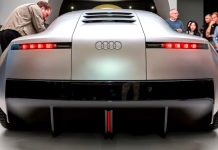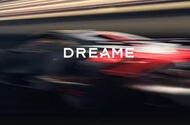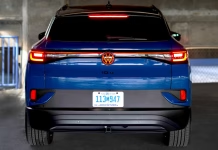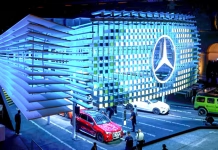Volkswagen Group Accelerates Solid State Battery Revolution with Ducati Testing and 2030 Production Target
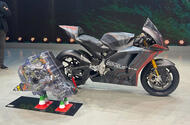 Company begins testing solid-state cells in radical Ducati motorbike; says it can be swapped into cars
Company begins testing solid-state cells in radical Ducati motorbike; says it can be swapped into cars
The Volkswagen Group is aiming to have solid-state batteries ready for production by 2030, having started testing the breakthrough technology in a Ducati motorbike.
The first Group prototype to use solid-state cells is based on the Italian bike maker’s V21L MotoE racer – but the cells are designed to transfer into cars with minimal changes once the technology is ready.
Solid-state batteries promise greater energy density – giving manufacturers greater flexibility to increase an EV's range within the same battery footprint or to reduce its weight with a smaller pack without sacrificing range – as well as faster charging speeds.
Officially, the decision to trial the technology in a bike was taken because of the additional performance it promises, with Ducati CEO Claudio Domenicali calling it a “perfect fit”.
Indeed, the significantly greater energy density of a solid-state battery compared with a conventional lithium ion battery could be key to resolving the weight, range and packaging problems faced by electric motorbike manufacturers.
But testing the technology in the V21L – in which the battery pack is a stressed part of the chassis, likely facing much greater forces than in an electric car’s 'skateboard' chassis – could also yield important findings in improving the durability of solid-state cells.
This has been a significant roadblock in their development thus far: natural chemical processes create cracks inside the ceramic electrolytes of solid-state cells and these can be exacerbated by external forces.
The Volkswagen Group said its battery-making spin-off PowerCo and solid-state battery company QuantumScape are working to develop a commercially viable solution by the end of this decade.
It added that this solution will be based around its Unified Cell, a new prismatic cell design that will first be used by the Electric Urban Car Family – the Cupra Raval, Skoda Epiq, Volkswagen ID Polo and Volkswagen ID Cross.
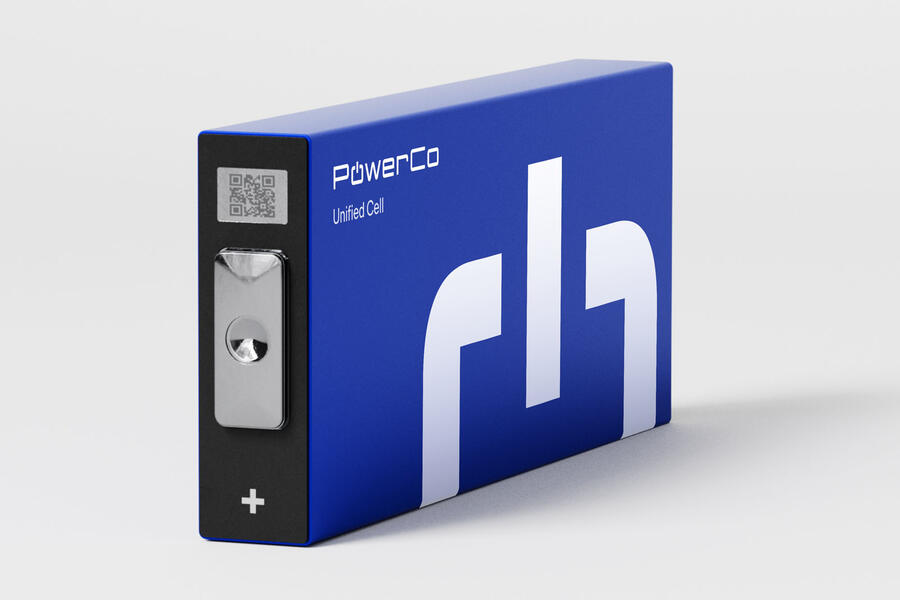
That would allow the solid-state cells to be swapped into existing models’ battery packs without significant modifications to the packs themselves.
The Unified Cell has been designed for use across 80% of the Group’s future electric models, suggesting a production car powered by solid-state cells could become available soon after the technology itself has been readied.
The Volkswagen Group is unlikely to be first to offer the technology, however. Nissan previously said it will launch its first solid-state EVs in 2028 and several Chinese manufacturers (including MG) already sell EVs fitted with semi-solid-state batteries, which have a significantly reduced liquid content compared with typical lithium ion equivalents. Mercedes-Benz is also testing an EQS with a solid-state battery that's said to boost its range by 25%, to more than 620 miles.
Audi’s Bold New Electric Sports Car Breaks Cover for 2027
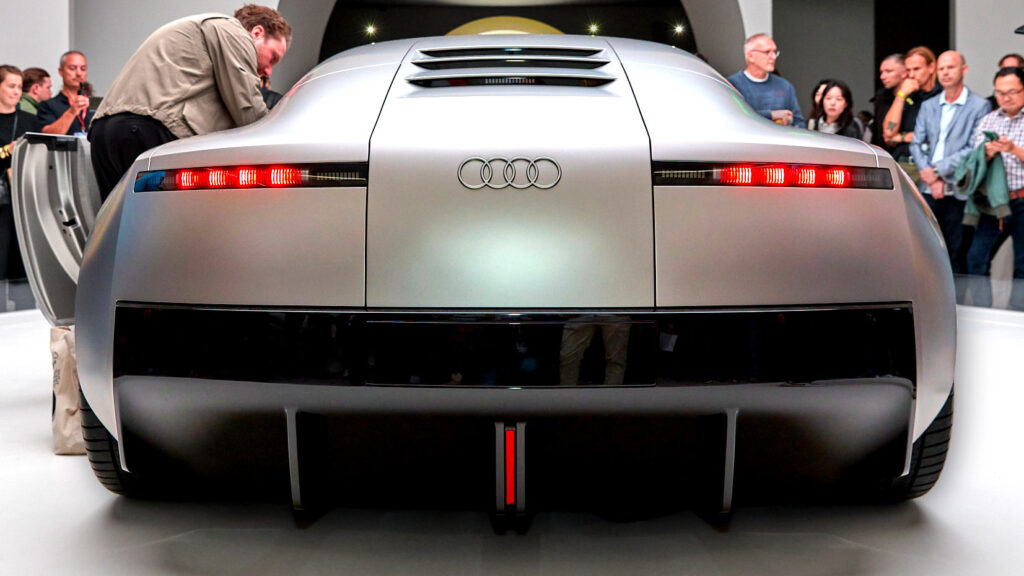
Chinese Tech Giant Dreame Plots German Hypercar Factory to Challenge Bugatti with Record-Breaking Electric...
 Vacuum cleaner brand to enter EV ranks with Bugatti-rivalling hypercar, which could be built in Germany
Vacuum cleaner brand to enter EV ranks with Bugatti-rivalling hypercar, which could be built in Germany
Chinese start-up Dreame Auto is considering establishing a manufacturing facility near Tesla’s Berlin Gigafactory, Autocar has learned.
The move, if confirmed, would make Dreame Auto the first Chinese car brand to establish production activities in Germany.
The news follows the announcement at the end of August that the newly established division of Dreame Technology is planning to enter the automotive ranks with financing to be handled by French banking giant BNP Paribas.
Dreame Auto is the automotive division of Dreame Technology, a major global player in electric home appliances, primarily known for its vacuum cleaners.
The parent company boasts a significant existing global presence, selling products at more than 6000 retail sites in more than 100 countries.
Dreame Auto has already assembled a team of nearly 1000 employees. The workforce is claimed to combine R&D personnel from Dreame's consumer electronics business with those from the automotive manufacturing sector.
In a statement of intent, Dreame has announced that its first car will be an "ultra-luxury pure-electric product" positioned to compete with hypercars like the Bugatti Chiron as the world’s fastest road car, with a debut scheduled for 2027.
The move makes Dreame, founded in 2017, the latest in a growing list of Chinese tech companies to enter the EV ranks, following Xiaomi, Skyworth, Huawei, Roborock and Baidu.
But Dreame’s target of redefining the limits of road car performance – in direct competition to long established brands such as Bugatti, Ferrari, McLaren and others – marks a particularly audacious start.
The new Chinese hypercar will reportedly draw on Dreame’s proprietary high-speed electric motor technology, developed in-house for its consumer devices.
The firm has expertise in manufacturing compact motors design to operate at more than 200,000rpm - experience that its founder and CEO, Yu Hao, said will translate directly into the high-power demands of motor performance at the hypercar level.
“Our dream is to create the fastest car in the world,” read an internal letter issued to employees on Thursday. “Great dreams are born from fearlessness.”
Dreame’s technological credentials extend beyond motors. The firm has commercialised vision recognition systems, AI-based path planning and spatial modelling - all developed for its robot vacuums.
As of the end of 2024, Dreame had filed more than 6300 patents globally. Many of them relate directly to competencies common in the EV field.
In preparation for its transition from consumer electronics to the automotive field, Dreame has hired a number of senior executives from established car manufacturers, covering areas such as research and development, production engineering and quality control.
While no technical specs or platform details for the hypercar have yet been disclosed, Dreame said it's pursuing a dual-track development approach: combining its rapid-cycle consumer technology culture with automotive-grade engineering standards.
The approach mirrors that of Dreame’s key robot vacuum rival, Roborock, which launchd its first production electric car, the 01, through its Rox automotive division in China in 2023.
Pope Leo XIV Blesses Custom BMW Motorcycle for Charity Auction Benefiting Madagascar Children
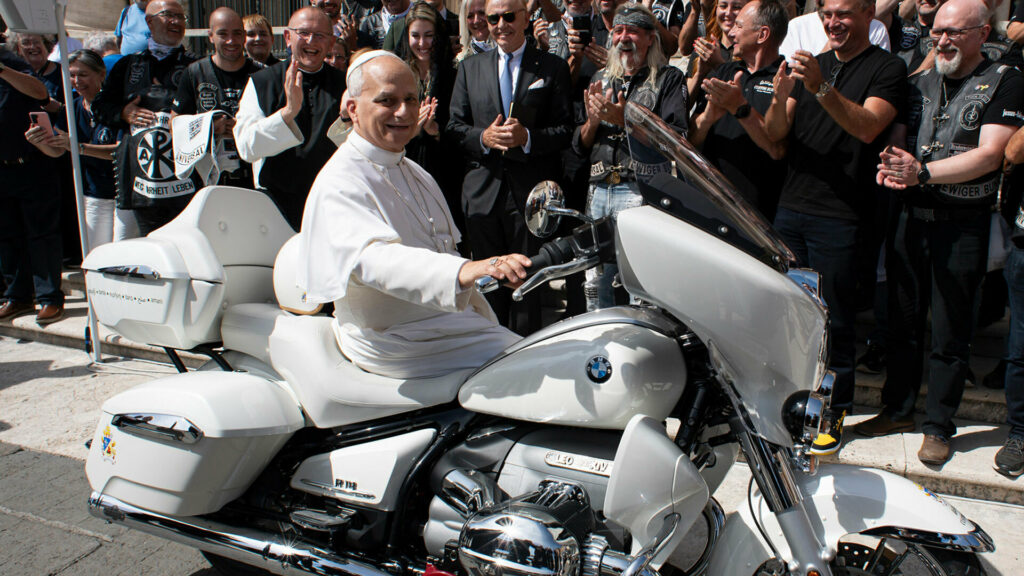
Volkswagen Unveils Bold Black Package for 2025 ID.4 Ahead of Major 2026 Redesign

Mackinac Bridge Antique Tractor Parade Celebrates Michigan’s Farming Heritage

Cupra Accelerates Global Ambitions with New Models and Middle East Expansion
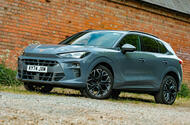 Spanish brand looks to new models and Middle East as it aims to accelerate growth
Spanish brand looks to new models and Middle East as it aims to accelerate growth
Cupra’s growth plans will focus on both broadening its model range and expanding into new markets, according to interim CEO Markus Haupt.
Next year, it will launch the new Raval electric hot hatch, shown in near production form at the Munich motor show, on the Volkswagen Group’s MEB Entry platform. It will be the brand’s smallest model and, starting from around £22,000, its cheapest.
Haupt told Autocar the Raval, the eighth model in Cupra’s line-up, “is very important to us”. He added: “We have a history of success with big growth, having launched seven models in our first seven years, and we need the Raval to continue this growth story.”
Cupra sold around 248,000 cars worldwide last year, 7.5% up on 2023. That trend is set to continue this year, and it should accelerate when the Raval launches next year.
But Haupt said the firm is not only relying on new models to spur growth but also actively looking into new markets. The firm had previously planned to launch in the US in the coming years, but those plans have been delayed due to market uncertainties.
Haupt said: “We don’t only need new cars to grow, we also need new markets. We are well established in more than 50 countries, more than 1200 dealers. But of course, we knew we also look to new markets because we need to keep growing.”
The current focus is on the Middle East, Haupt said, due to “feedback from the region, with customers and dealers asking ‘hey guys, when are you coming?'”
Mercedes Unleashes 40 New Models in Bold Electric Revolution and Cost-Cutting Drive

Next Generation Octavia Estate Revealed as Vision O Concept Promises Electric Power, Advanced AI,...
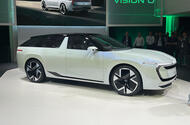 Vision O concept previews the next Octavia, tipped for range-extender power and high-level autonomous functions
Vision O concept previews the next Octavia, tipped for range-extender power and high-level autonomous functions
Skoda boss Klaus Zellmer says that the production version of the Vision O estate concept will be offered primarily as an electric vehicle – but that the firm “will explore all options” in terms of other powertrain options if regulations allow.
The new model is due to arrive early in the next decade, and while the Czech firm has given no technical details and only referred to it as electrified, the production version will be the first Skoda to use the Volkswagen Group’s new SSP platform.
While that is primarily an electric platform, it has designed to be highly flexible and the VW Group has confirmed that it will at least be able to accept a range-extender powertrain - as demonstrated by the Cupra Tindaya concept.
Asked by Autocar why the firm showed the Vision O at least five years before a production version, Zellmer joked: “It’s because you guys kept on pestering us about what’s happening with the estate BEV.”
But he added: “We also needed an answer for that for ourselves. We've sold millions of Octavias and Superbs, and that puts an obligation in your business plan.”
Skoda first previewed an electric estate three years ago, which was due to sit on the current MEB platform, but eventually postponed the project. Zellmer said that was because of the use case for an estate: “For long-distance driving you need autonomous functions in a car, and that will be easier to realise with a new platform.”
Asked whether Skoda would offer other powertrains beyond an EV for the next-gen Octavia, Zellmet noted that the speed of the electric transition “has not materialised” at the speed expected. He added: “We have seen different drivetrains coming in, especially plug-in hybrids.
“Give us some time to answer those questions: with the next platform, we want to keep all avenues open in terms of what is feasible and complexity, and in terms of regulation. The current governmental direction in the EU [and UK] is that in 2035 it's the end of combustion engines, which would mean [the new model is] BEV-only.
"But we've learned we need to keep avenues open and we need to do what our customers want. The first rule of any business is that if you do what your customers want you will be successful.”
Zellmer said that another major challenge that needs to be addressed in the years before the Vision O goes into production is affordability. He said that ensuring the model can be priced similar to the existing combustion car “is one of the highest objectives we have now, because we need to stay in that price bracket or else we're going to shock people and they'll go somewhere else.”
Measuring 4850mm long, the Vision O is notably longer than the current Octavia Estate (4698mm) but sits below the larger Superb (4902mm). The boot has more than 650 litres of space, compared with 640 litres for the Octavia. With the seats folded, that figure rises to more than 1700 litres.
The most striking aspect of the Vision O is the new exterior and interior design language, described as the next generation of Skoda’s ‘Modern Solid’ theme. That design change is seen in the new ‘Tech-loop face mask’ that houses all of the lighting elements, while an illuminated Skoda logo sits on the bonnet. There is also a new T-shaped LED light design at the rear.
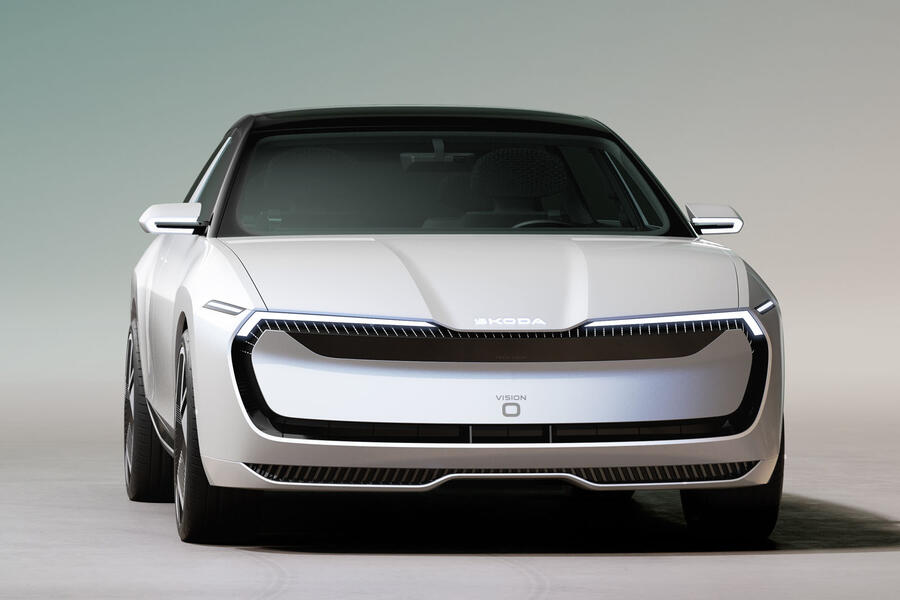
There is a major focus on aerodynamics to maximise the range of the estate, including retractable door handles, integrated cooling vents on the bonnet and various louvres and sculpted side channels. Skoda has not given a drag coefficient or any other technical details, such as powertrain, battery size or performance figures.
Skoda says the Vision O was developed “from the inside out”, with a focus on customers’ needs. A 1.2m-wide ‘Horizon Display’ digital screen spans the entire dashboard just below the windscreen and offers new HMI functions for both driver and passenger. It is complemented by a large vertical touchscreen in the centre of the dashboard. There is a minimalist centre panel featuring a dial button that offers haptic feedback, while the steering wheel retains a number of physical controls.
The firm says the concept has been designed for advanced autonomous driving using an AI assistant, which is called Laura. When in AI mode the exterior lighting uses distinct colour patterns to signal to other road users. Skoda says the concept will be able to handle all driving tasks independently, except in the case of heavy rain and reduced visibility. Laura can also be used for other functions, including making revised route suggestions to match the mood of the passengers and even reading custom-generated stories.

Skoda has also added some new ‘Simply Clever’ design features to the Vision O, including four dour-housed umbrellas, a dedicated storage space for the charging cable, a portable Bluetooth speaker and a fully integrated fridge.
The Vision O’s interior makes extensive use of recycled and sustainable materials, with the seat covers made from 100% recycled PES fl aking and the use of 65% plant-based Ultrasuede material elsewhere.


